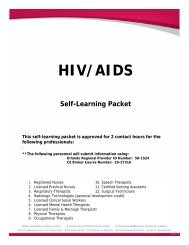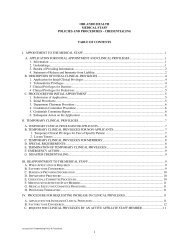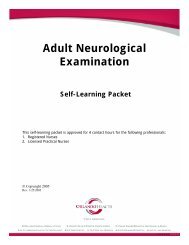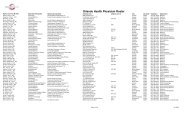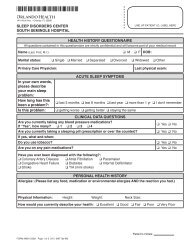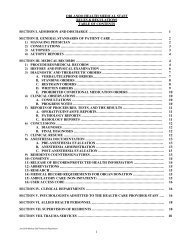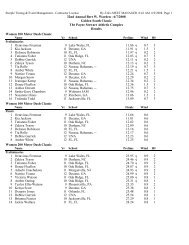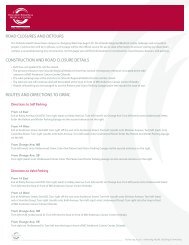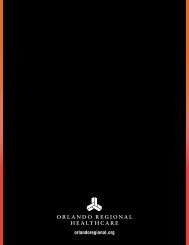Advanced Hemodynamics - Orlando Health
Advanced Hemodynamics - Orlando Health
Advanced Hemodynamics - Orlando Health
You also want an ePaper? Increase the reach of your titles
YUMPU automatically turns print PDFs into web optimized ePapers that Google loves.
Post Test<br />
<strong>Advanced</strong> Hemodynamic Monitoring<br />
Directions: Complete this test using the bubble sheet provided.<br />
1. Which of the following statements is true regarding the distal port of the pulmonary artery<br />
catheter<br />
A. It is connected to a pressure transducer and a flush device<br />
B. It is the port used for cardiac output injectate<br />
C. It allows continuous measurement of the pulmonary artery occlusive pressure<br />
D. It serves as an infusion port for vasoactive medications<br />
2. During the insertion of the pulmonary artery catheter, how much air should be used to inflate<br />
the balloon?<br />
A. ½ ml<br />
B. 1 ml<br />
C. 1 ½ ml<br />
D. 2 ml<br />
3. Which port must be connected to a transducer to allow waveform analysis during insertion of<br />
a pulmonary artery catheter?<br />
A. Pulmonary artery distal<br />
B. Proximal injectate port<br />
C. Proximal infusion port<br />
D. Cardiac Output port<br />
4. Which of the following reflects normal pulmonary artery systolic and diastolic pressures?<br />
A. 120/80 mm Hg<br />
B. 20/5 mm Hg<br />
C. 25/15 mm Hg<br />
D. 45/25 mm Hg<br />
5. Which one of the following statements about respiratory variation is true?<br />
A. Pulmonary artery pressure rises during inspiration in a spontaneously breathing<br />
patient.<br />
B. Pulmonary artery pressure falls during inspiration in mechanically ventilated patients<br />
C. Pulmonary artery pressure should be read at peak inspiration<br />
D. Pulmonary artery pressure should be measured at end expiration<br />
6. The left ventricular preload is measured clinically with a pulmonary artery catheter by<br />
obtaining a<br />
A. Systemic vascular resistance<br />
B. Contractility pressure<br />
C. Pulmonary artery systolic pressure<br />
D. Pulmonary artery occlusive pressure (PAOP/PAWP)<br />
7. In determining the amount of air used to wedge a pulmonary artery catheter, the best<br />
guideline to use is?<br />
A. Inflate until the wedge waveform is greater than the systolic<br />
B. Always instill 1 ½ cc air<br />
C. Instill the same amount of air used with the previous wedge<br />
Copyright 2010 <strong>Orlando</strong> <strong>Health</strong>, Education & Development 40



